Eugene A. Avallone, Theodore Baumeister, Ali Sadegh0-07-142867-4, 978-0-07-142867-5
Nearly 1800 pages of mechanical engineering facts, figures, standards, and practices, 2000 illustrations, and 900 tables clarifying important mathematical and engineering principle, and the collective wisdom of 160 experts help you answer any analytical, design, and application question you will ever have.
Table of contents :
Standard Handbookfor Mechanical Engineers……Page 1
Contributors……Page 3
Symbols and Abbreviations……Page 6
The Editors……Page 12
Preface to the Eleventh Edition……Page 13
Contents……Page 15
1.1 Mathematical Tables……Page 18
1.2.1 U.S. Customary System (USCS)……Page 33
1.2.3 The International System of Units (SI)……Page 34
1.2.4 Systems of Units……Page 41
1.2.8 Time……Page 42
1.2.9 Density and Relative Density……Page 43
1.2.10 Conversion and Equivalency Tables……Page 44
Section 2. Mathematics……Page 52
2.1.1.2 Numbers……Page 53
2.1.1.3 Functions……Page 54
2.1.2 Significant Figures and Precision……Page 55
2.1.3.2 Geometrical Constructions……Page 56
2.1.3.3 Lengths and Areas of Plane Figures……Page 58
2.1.4.1 Binomial Theorem……Page 61
2.1.5.1 Vectors……Page 62
2.1.5.4 Systems with Two Variables……Page 63
2.1.6.1 Formal Trigonometry……Page 65
2.1.6.2 Solution of Plane Triangles……Page 68
2.1.7.2 Equations of a Straight Line……Page 69
2.1.7.4 The Parabola……Page 70
2.1.7.6 The Hyperbola……Page 71
2.1.7.7 The Catenary……Page 72
2.1.7.8 Other Useful Curves……Page 73
2.1.8.1 Derivatives and Differentials……Page 75
2.1.8.3 Indeterminate Forms……Page 76
2.1.8.5 Indefinite Integrals……Page 77
2.1.8.6 Properties of Definite Integrals……Page 80
2.1.9.2 Series……Page 81
2.1.10.1 Methods of Solving Ordinary Differential Equations……Page 82
2.1.10.2 Linear Equations……Page 83
2.1.12 Vector Calculus……Page 85
2.1.14.1 Direct Transforms……Page 86
2.1.15 Special Functions……Page 88
2.1.16 Numerical Methods……Page 89
2.1.16.3 Partial Differential Equations……Page 90
2.2.1.1 Machine Types……Page 91
2.2.2.1 Binary Notation……Page 92
2.2.2.4 Data Structure Types……Page 93
2.2.3.3 Central Processing Unit……Page 94
2.3.3.5 File Devices……Page 95
2.2.4.1 Organization of Data Facilities……Page 96
2.2.4.3 Communication Layer Model……Page 97
2.2.5.1 Design Concepts……Page 98
2.2.6.2 Control-Flow Diagrams……Page 99
2.2.6.3 Data-Flow Diagrams……Page 100
2.2.7.1 Software Techniques……Page 101
2.2.7.3 Program Preparation Facilities……Page 102
2.2.7.4 Application Packages……Page 104
Section 3. Mechanics of Solids and Fluids……Page 105
3.1.2.1 General Laws……Page 106
3.1.3.3 Couples and Moments……Page 107
3.1.3.5 Forces Applied to Support Rigid Bodies……Page 108
3.1.3.7 Determination of Stresses in Members of a Statically Determinate Plane Structure with Loads at Rest……Page 109
3.1.4.1 Centroids of Technically Important Lines, Areas, and Solids……Page 110
3.1.5 Moment of Inertia……Page 111
3.1.5.1 Moments of Inertia of Important Solids (Homogeneous)……Page 113
3.1.6.2 Composition and Resolution of Velocities and Acceleration……Page 114
3.1.6.3 Curvilinear Motion in a Plane……Page 115
3.1.6.7 Motion of a Rigid Body in a Plane……Page 116
3.1.6.8 General Motion of a Rigid Body……Page 117
3.1.7.2 General Rule for the Solution of Problems When the Forces are Constant in Magnitude and Direction……Page 118
3.1.7.3 Balancing……Page 119
3.1.7.4 Rotation of Solid Bodies in a Plane about Fixed Axes……Page 120
3.1.8 Work and Energy……Page 121
3.1.9.1 Impact……Page 122
3.1.10 Gyroscopic Motion and the Gyroscope……Page 123
3.2.1 Static and Kinetic Coefficients of Friction……Page 124
3.2.1.2 Coefficients of Sliding Friction for Special Cases……Page 126
3.2.3.1 Wedges……Page 129
3.2.3.2 Screws……Page 130
3.2.3.4 Journals and Bearings……Page 131
3.2.3.7 Tension Elements……Page 132
3.3 Mechanics of Fluids……Page 133
3.3.1 Fluids and other Substances……Page 134
3.3.2 Fluid Properties……Page 135
3.3.3 Fluid Statics……Page 137
3.3.4 Fluid Kinematics……Page 140
3.3.5 Fluid Dynamics……Page 141
3.3.6 Dimensionless Parameters……Page 145
3.3.7 Dynamic Similarity……Page 147
3.3.8 Dimensional Analysis……Page 148
3.3.9 Forces of Immersed Objects……Page 150
3.3.10 Flow in Pipes……Page 151
3.3.11 Piping Systems……Page 154
3.3.12 ASME Pipeline Flowmeters……Page 157
3.3.14 ASME Weirs……Page 161
3.3.15 Open-Channel Flow……Page 163
3.3.16 Flow of Liquids from Tank Openings……Page 164
3.4.1 Single-Degree-of-Freedom Systems……Page 165
3.4.2 Multi-Degree-of-Freedom Systems……Page 174
3.4.3 Distributed-Parameter Systems……Page 176
3.4.4 Approximate Methods for Distributed Systems……Page 179
3.4.5 Vibration-Measuring Instruments……Page 182
Section 4. Heat……Page 184
4.1.3 Units of Force and Mass……Page 185
4.1.6 Specific Heat of Gases……Page 186
4.1.10.1 Notation……Page 187
4.1.12 Exergy……Page 189
4.1.13 Perfect Differentials. Maxwell Relations……Page 190
4.1.14 Ideal Gas Laws……Page 191
4.1.15 Ideal Gas Mixtures……Page 192
4.1.17 Graphical Representation……Page 193
4.1.18 Ideal Cycles with Perfect Gases……Page 194
4.1.20 Vapors……Page 196
4.1.22 Charts for Saturated and Superheated Vapors……Page 197
4.1.24 Mixtures of Air and Water Vapor……Page 198
4.1.26 Psychrometric Charts……Page 199
4.1.27 Air Conditioning……Page 200
4.1.29 Steam Cycles……Page 202
4.1.30 Thermodynamics of Flow of Compressible Fluids……Page 204
4.1.32 Throttling……Page 207
4.1.33.1 Combustion of Gaseous and Liquid Fuels……Page 208
4.1.35 Temperature Attained by Combustion……Page 211
4.1.38 Combustion of Solid Fuels……Page 213
4.2 Thermodynamic Properties of Substances……Page 215
4.3.2 Radiative Exchange between Surfaces of Solids……Page 246
4.3.2.1 Direct-View Factors and Direct Interchange Areas……Page 248
4.3.3 Radiation from Flames, Combustion Products, and Particle Clouds……Page 252
4.3.4 Radiative Exchange in Enclosures of Radiating Gas……Page 255
4.3.4.2 Partial Allowance for the Effect of Gas Nongrayness on Total Exchange Areas……Page 256
4.4 Transmission of Heat by Conduction and Convection……Page 262
4.4.1 Conduction……Page 263
4.4.2 Conduction and Convection……Page 264
4.4.3 Film Coefficients……Page 266
4.4.4 Laminar Flow……Page 268
Section 5. Strength of Materials……Page 273
5.1.1 Stress-Strain Diagrams……Page 274
5.1.2 Fracture at Low Stresses……Page 279
5.1.3 Fatigue……Page 280
5.1.4 Creep……Page 282
5.1.5 Hardness……Page 284
5.1.6 Testing of Materials……Page 285
5.2 Mechanics of Materials……Page 286
5.2.1 Simple Stresses and Strains……Page 287
5.2.2 Combined Stresses……Page 289
5.2.3 Plastic Design……Page 291
5.2.5 Beams……Page 292
5.2.5.1 Deflection of Beams……Page 300
5.2.5.2 Relation between Deflection and Stress……Page 302
5.2.5.3 Graphical Relations……Page 303
5.2.5.7 Continuous Beams……Page 304
5.2.6 Torsion……Page 308
5.2.7 Columns……Page 309
5.2.8 Eccentric Loads……Page 311
5.2.9 Curved Beams……Page 313
5.2.10 Impact……Page 315
5.2.11 Theory of Elasticity……Page 316
5.2.12 Cylinders and Spheres……Page 317
5.2.14 Flat Plates……Page 319
5.2.15 Theories of Failure……Page 320
5.2.16 Plasticity……Page 321
5.2.17 Rotating Disks……Page 322
5.3 Pipeline Flexure Stresses……Page 323
5.4.2 Penetrant Methods……Page 329
5.4.3 Radiographic Methods……Page 333
5.4.5 Eddy Current Methods……Page 334
5.5 Experimental Stress and Strain Analysis……Page 335
5.5.1 Resistance Strain Gages……Page 336
5.5.2 Geometric Moiré……Page 337
5.5.4 Photoelastic Stress Analysis……Page 339
5.5.7 Speckle Shearography……Page 342
5.6 Mechanics of Composite Materials……Page 343
5.6.1 Micromechanics of a Layer……Page 344
5.6.3 Stress-Strain Behavior of a Layer: Principal Material Coordinate System……Page 349
5.6.4 Stress-Strain Behavior of a Layer: Laminate Coordinate System……Page 350
5.6.5 Macromechanics of a Laminate……Page 352
5.6.5.1 Special Cases of Laminate Stacking Sequences……Page 354
5.6.6 Inverse Relations……Page 356
5.6.7 Laminate Stress Analysis……Page 357
5.6.8 Engineering Properties of a Laminate……Page 360
5.6.9 Failure of Composite Materials……Page 361
Section 6. Materials of Engineering……Page 364
6.1.1 Chemistry……Page 366
6.1.2 Specific Gravities and Densities and other Physical Data……Page 370
6.1.2.1 Compressibility of Liquids……Page 372
6.2.1 Classification of Iron and Steel……Page 375
6.2.2.1 Steel Manufacturing……Page 376
6.2.2.2 Mechanical Treatment of Steel……Page 377
6.2.2.3 Constitution and Structure of Steel……Page 378
6.2.2.4 Heat-Treating Operations……Page 379
6.2.3 Effect of Alloying Elements on the Properties of Steel……Page 381
6.2.4 Principles of Heat Treatment of Iron and Steel……Page 382
6.2.5 Composite Materials……Page 383
6.2.7 Commercial Steels……Page 384
6.2.7.1 Understanding some Mechanical Properties of Steels……Page 385
6.2.8 Tool Steels……Page 391
6.2.11 Stainless Steels……Page 392
6.3.1 Classification of Castings……Page 397
6.3.2.1 Types of Cast Iron……Page 398
6.3.2.2 Allowances for Iron Castings……Page 402
6.3.3 Steel Castings……Page 403
6.3.3.1 Allowances for Steel Castings……Page 406
6.4.1 Introduction……Page 409
6.4.2.1 Introduction……Page 412
6.4.2.3 Tempers……Page 413
6.4.2.4 Product Forms……Page 415
6.4.2.5 Fabrication……Page 417
6.4.2.6 Corrosion Resistance……Page 419
6.4.2.7 Finishes……Page 420
6.4.4 Cemented Carbides……Page 421
6.4.4.2 Physical and Mechanical Properties……Page 423
6.4.5.2 Generic Classification of Copper Alloys……Page 425
6.4.5.4 Coppers……Page 426
6.4.5.7 Properties and Processing of Copper Alloys……Page 428
6.4.6.1 Staff Contribution……Page 434
6.4.7 Low-Melting-Point Metals and Alloys……Page 435
6.4.8 Metals and Alloys for use at Elevated Temperatures……Page 436
6.4.9 Metals and Alloys for Nuclear Energy Applications……Page 442
6.4.10 Magnesium and Magnesium Alloys……Page 445
6.4.11 Powdered Metals……Page 446
6.4.12 Nickel and Nickel Alloys……Page 449
6.4.13 Titanium and Zirconium……Page 451
6.4.13.5 Fabrication……Page 452
6.4.14 Zinc and Zinc Alloys……Page 453
6.4.14.3 Wrought Zinc……Page 454
6.5.1 Introduction……Page 455
6.5.2 Thermodynamics of Corrosion……Page 456
6.5.3 Corrosion Kinetics……Page 457
6.5.4 Factors Influencing Corrosion……Page 458
6.5.5 Forms of Corrosion……Page 460
20.13.3.4 Special Alphabets……Page 0
Section 7. Fuels and Furnaces……Page 572
7.1.1.1 Classification and Description……Page 573
7.1.1.2 Composition and Characteristics……Page 576
7.1.1.4 Preparation……Page 578
7.1.2 Biomass Fuels……Page 579
7.1.3.1 Petroleum and Petroleum Products……Page 581
7.1.3.3 Diesel Fuel……Page 583
7.1.4 Gaseous Fuels……Page 585
7.1.5 Synthetic Fuels……Page 587
7.1.6 Explosives……Page 590
7.1.7.1 Explosibility Factors……Page 593
7.1.7.2 Relative Dust Explosion Hazards……Page 597
7.1.7.4 Combating Dust Fires……Page 598
7.1.8.2 Liquid Propellants versus Solid Propellants……Page 599
7.2 Carbonization of Coal and Gas Making……Page 601
7.2.1 Carbonization of Coal……Page 602
7.2.2 Carbonizing Apparatus……Page 606
7.2.3 Gasification……Page 608
7.3.2 Types of Industrial Heating Furnaces……Page 614
7.3.3 Size and Economy of Furnaces……Page 615
7.3.5 Heat-Saving Methods……Page 617
7.3.6 Special Atmospheres……Page 618
7.4.4 Furnace Design……Page 619
7.4.5 Combustion Calculations……Page 623
7.4.6 Recovery……Page 624
7.5.2 Resistor Furnaces……Page 625
7.5.5 Arc Furnaces……Page 628
7.5.5.1 High-Voltage AC Operations……Page 630
7.5.6 Induction Furnaces……Page 631
7.5.8 Submerged-Arc and Resistance Furnaces……Page 632
Section 8. Machine Elements……Page 634
8.1.1 Linkages……Page 636
8.1.2 Cams……Page 637
8.1.4 Epicyclic Trains……Page 639
8.1.5 Other Mechanisms……Page 640
8.1.5.1 Harmonic Drive Mechanism……Page 641
8.1.5.2 Slider Crank Mechanism……Page 642
8.2.1.1 Unified Inch Screw Threads (or Unified Screw Threads)……Page 643
8.2.1.4 Power Transmission Screw Threads: Forms and Proportions……Page 644
8.2.1.6 Ball Screws……Page 651
8.2.1.7 Screw Threads for Pipes……Page 652
8.2.1.9 Eyebolts……Page 653
8.2.1.10 Locking Fasteners……Page 656
8.2.1.11 Materials, Strength, and Service Adaptability of Bolts and Screws Materials……Page 657
8.2.1.12 General Notes on the Design of Bolted Joints……Page 658
8.2.2.2 Blind Rivets……Page 663
8.2.3 Keys, Pins, and Cotters……Page 664
8.2.4 Splines……Page 666
8.2.5.1 Rigid Couplings……Page 667
8.2.5.2 Flexible Couplings……Page 668
8.2.5.3 Fluid Couplings……Page 669
8.2.6 Clutches……Page 670
8.2.7 Hydraulic Power Transmission……Page 672
8.2.8 Brakes……Page 673
8.2.8.1 Band Type……Page 674
8.2.8.3 Disk Brakes……Page 675
8.2.9 Shrink, Press, Drive, and Running Fits……Page 676
8.2.10 Shafts, Axles, and Cranks……Page 680
8.2.11 Pulleys, Sheaves, and Flywheels……Page 683
8.2.12.1 Flat-Belt Drives……Page 684
8.2.12.2 V-Belt Drives……Page 687
8.2.12.3 Adjustable Motor Bases……Page 690
8.2.13.1 Roller-Chain Drives……Page 692
8.2.13.2 Flywheels……Page 696
8.2.14 Springs……Page 698
8.2.14.1 Springs Subjected to Bending……Page 699
8.2.14.5 Design by Tables……Page 701
8.2.14.6 Design by Formula……Page 702
8.2.15 Wire Rope……Page 705
8.2.15.1 Selection of Wire Rope……Page 707
8.2.15.2 Sizing of Drums or Sheaves……Page 708
8.2.16.1 Knots, Hitches, and Bends……Page 710
8.2.19 Drill Sizes……Page 711
8.3.1 Basic Gear Data……Page 716
Section 9. Power Generation……Page 811
9.1.1.1 Fossil Fuels……Page 813
9.1.3.1 Labor……Page 814
9.1.4 Wind Power……Page 815
9.1.5 Power from Biomass……Page 821
9.1.6.2 Introduction and Scope……Page 822
9.1.6.3 Applications of Heliotechnology……Page 826
9.1.7 Geothermal Power……Page 828
9.1.8 Stirling (Hot Air) Engines……Page 831
9.1.10 Utilization of Energy of Ocean Waves……Page 833
9.1.12 Power from Hydrogen……Page 834
9.1.13.1 Thermoelectric Generation……Page 835
9.1.13.4 Fuel Cells……Page 836
9.1.13.5 Magnetohydrodynamic Generation……Page 837
9.1.13.7 Other Energy Converters……Page 838
9.2.1 Fuels Available for Steam Generation……Page 839
9.2.2.1 Slag and Ash……Page 840
9.2.3.1 Stoker Firing Systems……Page 842
9.2.3.2 Pulverizers……Page 843
9.2.3.3 Burners and Combustion Systems……Page 845
9.2.3.5 Fluidized-Bed Combustion……Page 846
9.2.4 Boiler Types……Page 847
9.2.5.1 Furnaces……Page 850
9.2.5.2 Superheaters and Reheaters……Page 852
9.2.5.3 Economizers……Page 853
9.2.5.5 Steam Temperature, Adjustment, and Control……Page 854
9.2.6 Operating Controls……Page 855
9.2.7.1 Boiler Circulation……Page 856
9.2.7.2 Steam Separation……Page 857
9.2.7.4 Performance……Page 858
9.2.8.1 Control of Particulate……Page 859
9.2.8.2 Control of NO_X……Page 860
9.2.8.3 Control of SO_2……Page 861
9.2.9.3 Boiler Water……Page 863
9.2.10 Care of Boilers……Page 864
9.2.12 Nuclear Steam Generators……Page 865
Section 10. Materials Handling……Page 977
10.1.2 Flow Analysis……Page 978
10.1.6 Material Feeding and Metering Modes……Page 979
10.2.1 Chain……Page 980
10.2.1.2 General-Purpose Welded Carbon-Steel Chains……Page 981
10.2.1.4 Chain End Fittings……Page 983
10.2.2 Wire Rope……Page 984
10.2.3.1 Lifting Tongs……Page 987
10.2.3.3 Lifting Magnets……Page 988
10.2.3.4 Buckets and Scrapers……Page 990
10.2.4.3 Electric Hoists……Page 991
10.2.4.5 Jacks and Power Screw Actuators……Page 994
10.2.5 Mine Hoists and Skips……Page 995
10.2.6 Elevators, Dumbwaiters, Escalators……Page 996
10.3.2 Locomotive Haulage, Coal Mines……Page 998
10.3.3 Industrial Cars……Page 1000
10.3.6 Car-Unloading Machinery……Page 1001
10.4.2.1 Lift Trucks and Palletized Loads……Page 1002
10.4.2.2 Off-Highway Vehicles and Earthmoving Equipment……Page 1003
10.4.3.1 Monorails……Page 1005
10.4.3.2 Overhead Traveling Cranes……Page 1006
10.4.3.3 Gantry Cranes……Page 1008
10.4.3.6 Derricks……Page 1010
10.4.3.7 Mobile Cranes……Page 1011
10.4.3.8 Cableways……Page 1013
10.4.3.9 Cable Tramways……Page 1014
10.4.4.2 Dredges……Page 1016
10.4.4.3 Dragline Excavators……Page 1017
10.5.1.1 Trolley Conveyors……Page 1018
10.5.1.2 Power-and-Free Conveyor……Page 1021
10.5.2 Noncarrying Conveyors……Page 1023
10.5.2.1 Screw Conveyors……Page 1025
10.5.2.2 Chutes……Page 1026
10.5.3.1 Apron Conveyors……Page 1027
10.5.3.2 Bucket Conveyors and Elevators……Page 1028
10.5.3.3 Belt Conveyors……Page 1030
10.5.3.5 Roller Conveyors……Page 1035
10.5.3.6 Pneumatic Conveyors……Page 1036
10.5.4 Changing Direction of Materials on a Conveyor……Page 1037
10.6.2 Robots……Page 1039
10.6.2.1 Robot Anatomy……Page 1040
10.6.2.2 Robot Specifications……Page 1041
10.6.2.3 Robot Motion Control……Page 1043
10.6.2.4 Programming Robots……Page 1044
10.7.1 Identification and Control of Materials……Page 1045
10.7.2 Storage Equipment……Page 1055
10.7.3 Automated Storage/Retrieval Systems……Page 1056
10.7.5 Loading Dock Design……Page 1057
Section 11. Transportation……Page 1058
11.1.2 Tractive Force……Page 1060
11.1.4 Fuel Consumption……Page 1061
11.1.5 Transmissions……Page 1063
11.1.6 Driveline……Page 1066
11.1.7 Suspensions……Page 1068
11.1.8 Steering……Page 1069
11.1.9 Braking Systems……Page 1070
11.1.10 Wheels and Tires……Page 1072
11.1.11 Heating, Ventilating, and Air Conditioning (HVAC)……Page 1073
11.1.12 Automobile Construction……Page 1074
11.2.1 Diesel-Electric Locomotives……Page 1075
11.2.1.1 Performance……Page 1079
11.2.2 Electric Locomotives……Page 1081
11.2.3.1 Freight Car Types……Page 1082
11.2.3.2 Freight Car Design……Page 1085
11.2.3.3 Freight-Car Suspension……Page 1086
11.2.3.5 Special Features……Page 1087
11.2.3.6 Freight-Train Braking……Page 1088
11.2.4 Passenger Equipment……Page 1089
11.2.5 Track……Page 1093
11.2.6 Vehicle-Track Interaction……Page 1095
11.3.3.1 Units and Definitions……Page 1097
11.3.3.2 Structure……Page 1098
11.3.3.3 Stability……Page 1100
11.3.3.4 Seakeeping……Page 1101
11.3.3.5 Resistance and Powering……Page 1102
11.3.4.2 Dynamic Constraints……Page 1103
11.3.5.1 Definitions for Propulsion Systems……Page 1104
11.3.6.1 Steam Plants……Page 1105
11.3.6.2 Diesel Engines……Page 1107
11.3.6.4 Combined Propulsion Plants……Page 1108
11.3.7.1 Screw Propellers……Page 1109
11.3.7.5 Other Thrust Devices……Page 1111
11.3.8.4 Marine Shafting……Page 1112
11.3.9 High-Performance Ship Systems……Page 1113
11.3.9.1 Hydrofoil Craft……Page 1114
11.4 Aeronautics……Page 1115
11.4.2 Standard Atmosphere……Page 1116
11.4.4 Subsonic Aerodynamic Forces……Page 1117
11.4.5 Airfoils……Page 1118
11.4.5.1 Selection of Wing Section……Page 1119
11.4.5.3 Airplane Performance……Page 1121
11.4.5.4 Parasite Drag……Page 1124
11.4.5.5 Drag Coefficients of Various Bodies……Page 1126
11.4.6 Control, Stability, and Flying Qualities……Page 1127
11.4.7 Helicopters……Page 1128
11.4.9 Supersonic and Hypersonic Aerodynamics……Page 1129
Section 12. Building Construction and Equipment……Page 1208
12.1.1 Purposes……Page 1209
12.1.2.2 Activities and Contents……Page 1210
12.1.2.3 Space and Size Calculations……Page 1211
12.1.2.4 Plant Emplacement and Site Selection……Page 1212
12.1.2.5 Configuration……Page 1214
12.1.2.6 Services……Page 1218
12.1.2.7 Building Structure……Page 1221
12.1.2.8 Other Considerations……Page 1223
12.1.3.1 Cost Estimates……Page 1224
12.1.4 Construction……Page 1225
12.2.1 Loads and Forces……Page 1226
12.2.2.1 Floors and Roofs……Page 1227
12.2.2.2 Stresses in Trusses……Page 1228
12.2.2.3 Analytical Solution of Trusses……Page 1229
12.2.2.4 Columns and Walls……Page 1230
12.2.2.5 Foundations……Page 1231
12.2.3 Masonry Construction……Page 1233
12.2.4 Timber Construction……Page 1234
12.2.4.1 Timber Beams……Page 1235
12.2.4.2 Timber Columns……Page 1236
12.2.4.3 Connections……Page 1237
12.2.5 Steel Construction……Page 1239
12.2.5.2 Design of Members……Page 1240
12.3 Reinforced Concrete Design and Construction……Page 1244
12.3.1 Materials……Page 1245
12.3.4 Load Factors for Reinforced Concrete……Page 1246
12.3.5 Reinforced Concrete Beams……Page 1247
12.3.6 Reinforced Concrete Columns……Page 1250
12.3.7 Reinforced Concrete Floor Systems……Page 1251
12.3.8 Footings……Page 1253
12.3.10 Prestressed Concrete……Page 1254
12.3.13 Forms……Page 1255
12.4.1.1 Temperature-Humidity Index……Page 1256
12.4.3 Outdoor Design Conditions……Page 1257
12.4.3.1 Ventilation and Infiltration……Page 1258
12.4.3.2 Infiltration of Moisture……Page 1259
12.4.4.1 Cooling Load……Page 1266
12.4.4.4 Internal Heat Gains……Page 1268
12.4.4.5 Outside Air……Page 1278
12.4.6 Psychrometrics……Page 1280
12.4.6.1 Terminology……Page 1282
12.4.7 Duct Design……Page 1283
12.4.8 Fans……Page 1284
12.4.9 Fan Laws……Page 1285
12.4.11 Air Treatment Criteria……Page 1286
12.4.12 Heat Rejection Apparatus……Page 1288
12.4.12.2 Steam System Piping……Page 1290
12.5.1 Basic Units……Page 1295
12.5.4 Light Sources……Page 1296
12.5.4.2 Lamps……Page 1297
12.5.5 Prescribing Illumination……Page 1299
12.5.5.3 Room, Furniture, and Equipment Finishes……Page 1300
12.5.6.1 Point Method of Design……Page 1301
12.5.8 Dimming Systems……Page 1302
12.6.1 Sound……Page 1303
12.6.1.1Transducers……Page 1304
12.6.2 Noise……Page 1305
12.6.2.3 Shielding……Page 1306
12.6.3.1 High-Intensity Applications……Page 1308
12.6.3.2 Low-Intensity Applications……Page 1310
Section 13. Manufacturing Processes……Page 1311
13.1.2 Patterns……Page 1313
13.1.3.1 Molding Processes……Page 1314
13.1.3.2 Permanent-Mold Casting Methods……Page 1315
13.1.5 Molding Sand……Page 1316
13.1.6.1 Ferrous Alloys……Page 1317
13.1.8 Cleaning and Inspection……Page 1318
13.2.1 Structure……Page 1319
13.2.2 Plasticity……Page 1320
13.2.4 Plastic Working Techniques……Page 1321
13.2.5 Rolling Operations……Page 1323
13.2.6 Shearing……Page 1326
13.2.8 Drawing……Page 1328
13.2.9 Bulk Forming……Page 1333
13.2.10 Equipment for Working Metals……Page 1336
13.3.2.1 Welding Process Fundamentals……Page 1339
13.3.2.4 Flux Cored Arc Welding (FCAW)……Page 1340
13.3.2.5 Submerged Arc Welding (SAW)……Page 1341
13.3.2.6 Gas Metal Arc Welding (GMAW)……Page 1342
13.3.3 Gas Welding and Brazing……Page 1343
13.3.4 Resistance Welding……Page 1344
13.3.6 Thermal Cutting Processes……Page 1345
13.3.7.3 Sizing of Welds……Page 1347
13.3.7.4 Summary……Page 1351
13.3.7.5 Allowable Fatigue Strength of Welds……Page 1352
13.3.8.1 Introduction……Page 1357
13.3.8.3 Stainless Steel……Page 1358
13.3.9 Safety……Page 1359
13.4.2 Basic Mechanics of Metal Cutting……Page 1360
13.4.3 Cutting-Tool Materials……Page 1362
13.4.4 Cutting Fluids……Page 1364
13.4.5 Machine Tools……Page 1365
13.4.6.1 Tool Shapes for Turning……Page 1366
13.4.6.3 Screw Machines……Page 1367
13.4.7 Boring……Page 1369
13.4.8 Drilling……Page 1370
13.4.9 Reaming……Page 1371
13.4.11.1 Milling Cutters……Page 1372
13.4.12 Gear Manufacturing……Page 1373
13.4.14 Broaching……Page 1375
13.4.16 Abrasive Processes……Page 1376
13.4.16.2 Finishing Operations……Page 1378
13.4.17 Machining and Grinding of Plastics……Page 1379
13.4.19 Advanced Machining Processes……Page 1380
13.5.1 Design Criteria……Page 1382
13.5.2 Designation Standards, Symbols, and Conventions……Page 1383
13.5.3 Measurement……Page 1384
13.5.5 Surface Quality versus Tolerances……Page 1385
13.5.6 Quality Control (Six Sigma)……Page 1386
13.6.1 Sawing……Page 1387
13.6.2 Planing and Molding……Page 1388
13.6.4 Sanding……Page 1389
13.7.1 Importance of Cleanliness……Page 1390
13.7.4 Selection of a Cleaning Method……Page 1391
13.7.5 Test Methods and Analysis……Page 1392
13.7.7 Regulatory Considerations……Page 1393
Section 14. Fans, Pumps, and Compressors……Page 1394
14.1.2 Reciprocating Pumps……Page 1395
14.1.2.2 High-Pressure Applications……Page 1396
14.1.2.5 Liquid-End Components……Page 1397
14.1.2.7 Power Pumps……Page 1398
14.1.2.8 Direct-Acting Pumps……Page 1403
14.1.3 Rotary Pumps……Page 1404
14.1.5 Power Output and Input……Page 1406
14.1.8 System Design……Page 1407
14.2.1 Nomenclature and Mechanical Design……Page 1408
14.2.1.2 Casings……Page 1409
14.2.1.3 Wearing Rings……Page 1410
14.2.1.8 Sealing Devices……Page 1411
14.2.2 Hydraulic Thrust……Page 1412
14.2.3 Hydraulic Performance……Page 1413
14.2.3.1 Hydraulic Design……Page 1414
14.2.3.2 Pump Application……Page 1415
14.2.4 NPSH……Page 1416
14.2.4.1 System Head Curve……Page 1417
14.2.6.1 Shaft Alignment……Page 1418
14.3 Compressors……Page 1419
14.4.2 Pump Selection……Page 1432
14.4.3 Coarse-Vacuum Pumps……Page 1433
14.4.4 Turbomolecular Pumps……Page 1434
14.4.5 Vapor Jet Pumps (Diffusion Pumps)……Page 1435
14.4.6 Cryogenic Pumps……Page 1436
14.4.7 Getter and Ion Pumps……Page 1437
14.5 Fans……Page 1439
14.5.1 Fan Performance and Testing……Page 1440
14.5.2.1 System Characteristics……Page 1441
14.5.2.3 Fan-System Matching……Page 1442
14.5.2.5 Stability Considerations……Page 1444
14.5.2.7 Other Systems……Page 1445
Section 15. Electrical and Electronics Engineering……Page 1446
15.1.1.1 Electrical Units……Page 1447
15.1.1.2 Magnetic Units……Page 1448
15.1.2 Conductors and Resistance……Page 1449
15.1.3 Electrical Circuits……Page 1451
15.1.4 Magnetism……Page 1453
15.1.5.1 Primary Batteries……Page 1456
15.1.5.2 Storage (Secondary) Batteries……Page 1458
15.1.6.1 Capacitors……Page 1460
15.1.7 Transients……Page 1461
15.1.8 Alternating Currents……Page 1462
15.1.9 Electrical Instruments and Measurements……Page 1465
15.1.9.1 Measurement of Energy……Page 1467
15.1.9.2 Instrument Transformers……Page 1468
15.1.9.3 Measurement of Resistance……Page 1469
15.1.10 DC Generators……Page 1470
15.1.11 DC Motors……Page 1472
15.1.11.1 Speed Control of Motors……Page 1474
15.1.12 Synchronous Generators……Page 1475
15.1.15 Transformers……Page 1479
15.1.16 AC Motors……Page 1481
15.1.18 Synchronous Converters……Page 1487
15.1.19.1 Application of Electrical Motors……Page 1488
15.1.19.2 Efficiency of Electrical Motors……Page 1489
15.1.20 Electric Drives……Page 1490
15.1.21 Switchboards……Page 1491
15.1.22.1 Transmission Systems……Page 1493
15.1.22.2 Underground Power Cables……Page 1496
15.1.23 Power Distribution……Page 1497
15.1.24 Wiring Calculations……Page 1500
15.1.25 Interior Wiring……Page 1501
15.1.25.1 Wiring Methods……Page 1502
15.1.25.2 Conductors……Page 1503
15.1.27 Magnets……Page 1507
15.1.28.2 Automobile Lighting and Starting Systems……Page 1511
15.2.1 Components……Page 1513
15.2.2 Discrete-Component Circuits……Page 1515
15.2.4 Linear Integrated Circuits……Page 1520
15.2.5 Digital Integrated Circuits……Page 1524
15.2.6 Computer Integrated Circuits……Page 1527
15.2.7 Computer Applications……Page 1528
15.2.8 Digital Communications……Page 1529
15.2.9 Power Electronics……Page 1530
15.2.10 Communications……Page 1531
15.2.11 Telephone Communications……Page 1534
15.2.12 Wireless Technology……Page 1535
15.2.14 Global Positioning Information……Page 1536
Section 16. Instruments and Controls……Page 1537
16.1.2 Counting Events……Page 1538
16.1.4 Mass and Weight Measurement……Page 1539
16.1.5 Measurement of Linear and Angular Displacement……Page 1540
16.1.9 Pressure and Vacuum Measurement……Page 1543
16.1.11 Temperature Measurement……Page 1545
16.1.12 Measurement of Fluid Flow Rate……Page 1550
16.1.14 Electrical Measurements……Page 1552
16.1.16 Measurement of Physical and Chemical Properties……Page 1554
16.1.17 Nuclear Radiation Instruments……Page 1555
16.1.18 Indicating, Recording, and Logging……Page 1556
16.2.1 Introduction……Page 1557
16.2.3 Process as Part of the System……Page 1558
16.2.4 Transient Analysis of a Control System……Page 1560
16.2.6 Block Diagrams……Page 1562
16.2.6.1 Block-Diagram Algebra……Page 1563
16.2.8 Controller Mechanisms……Page 1564
16.2.10 Hydraulic-Control Systems……Page 1566
16.2.11 Steady-State Performance……Page 1567
16.2.12 Closed-Loop Block Diagram……Page 1568
16.2.13 Frequency Response……Page 1569
16.2.16 Bode Diagram……Page 1570
16.2.18 Stability and Performance of an Automatic Control……Page 1573
16.2.19 Sampled-Data Control Systems……Page 1574
16.2.20.1 Previous Work and Results……Page 1575
16.2.20.3 Robustness Concepts of the LQG and LQG/LTR Control Systems……Page 1576
16.2.22.1 Performance Robustness……Page 1577
16.2.22.2 Stability Robustness……Page 1578
16.2.23.1 Linear Quadratic Regulator……Page 1579
16.2.24 Procedure for LQG/LTR Compensator Design……Page 1580
16.2.25.1 The Linearized Model……Page 1581
16.2.25.3 LQG/LTR Controller Design……Page 1582
16.2.25.5 Precompensator Design……Page 1583
16.2.26.1 Deaerator Study Summary and Conclusions……Page 1584
16.2.26.3 Linearization of the Nonlinear Model……Page 1585
16.2.27.1 Fuzzy Control……Page 1586
16.2.27.3 Chaos……Page 1587
16.3.2.2 Electronic Distance Measurement……Page 1588
16.3.3 Vertical Distance……Page 1589
16.3.4 Angular Measurement……Page 1590
16.3.5 Special Problems in Surveying and Mensuration……Page 1593
16.3.6 Global Positioning System……Page 1597
Section 17. Industrial Engineering……Page 1598
17.1.2 Inventory Management……Page 1600
17.1.3 Scheduling……Page 1602
17.1.4 Aggregate Planning……Page 1603
17.1.6 Statistical Process Control……Page 1604
17.1.7 Linear Programming……Page 1605
17.1.9 Monte Carlo……Page 1607
17.2.3 Classifications of Costs……Page 1608
17.2.5 Elements of Costs……Page 1610
17.2.7 Management and the Control Function……Page 1611
17.2.9 Budgets and Standard Costs……Page 1612
17.2.11 Supporting Decision Making……Page 1613
17.2.12 Capital-Expenditure Decisions……Page 1614
17.3.3 Characterizing Observational Data: The Average and Standard Deviation……Page 1615
17.3.4.2 Wear-out and Life Tests……Page 1616
17.3.5.2 Procedure……Page 1617
17.3.6.5 Several Methods – Rank Test……Page 1618
17.3.7 Go/No-Go Data……Page 1619
17.3.8 Control Charts……Page 1620
17.3.8.1 Process Capability Indices……Page 1621
17.4.3 Workplace Design……Page 1622
17.4.7 Operation Analysis……Page 1623
17.4.9 Standardizing the Job……Page 1624
17.4.11 Time Study Observations……Page 1625
17.4.12 Performance Rating……Page 1626
17.4.15 Time Formulas and Standard Data……Page 1627
17.5 Cost of Electric Power……Page 1628
17.5.1 Constructed Plant Costs……Page 1629
17.5.2 Fixed Charges……Page 1632
17.5.3 Operating Expenses……Page 1633
17.5.6 Power Prices……Page 1634
17.6.2 Vision……Page 1636
17.6.4 Skill and Errors……Page 1637
17.6.5 Manual Control……Page 1638
17.6.7 Modeling the Human in the MMS……Page 1639
17.7.1 Design for Assembly……Page 1640
17.7.2 Autofacturing Subsystems……Page 1642
17.7.3 Micron and Nano Autofacturing……Page 1643
Section 18. The Regulatory Environment……Page 1644
18.1.3 An Overview of Ecology……Page 1645
18.1.4.3 Direct Water Cooling……Page 1646
18.1.5 Control of Thermal Discharges……Page 1647
18.1.6.3 Environmental Considerations for Construction Projects……Page 1648
18.1.6.5 Process Selection, Recycling, and Ultimate Disposal of Residual Wastes……Page 1649
18.1.8 Sources and Control of Air Pollution……Page 1650
18.1.8.2 Low-Emission Automotive Propulsion Systems……Page 1651
18.1.8.4 Cleaning Apparatus……Page 1653
18.1.8.5 Effect of Sulfur Gases and Particulates on Vegetation……Page 1654
18.1.8.6 Sulfur Dioxide Emission Limitation (SDEL) Programs……Page 1655
18.1.8.7 Atmospheric Dispersion of Pollutants from Stacks……Page 1656
18.1.8.9 Air Pollution Control in Various Industries……Page 1657
18.1.9.1 General Considerations……Page 1658
18.1.10.2 Product Recovery……Page 1660
18.2.1 Worker’s Compensation Laws……Page 1661
18.2.2.2 Mechanical Guarding in Machine Design……Page 1662
18.2.2.4 Occupational-Disease Prevention……Page 1663
18.3.1 Importance of Fire Protection……Page 1665
18.3.2 Construction……Page 1666
18.3.4 Automatic Sprinklers……Page 1667
18.3.5 Water Supplies for Fire Protection……Page 1668
18.3.9 Special Forms of Fire Protection……Page 1669
18.4.1.1 United States……Page 1670
18.4.2.1 United States……Page 1672
18.4.3.2 Foreign Countries……Page 1673
Section 19. Refrigeration, Cryogenics, and Optics……Page 1674
19.1.2 Properties of Refrigerants……Page 1675
19.1.3 Overall Cycles……Page 1685
19.1.4 Components of Compression Systems……Page 1686
19.1.4.1 Vapor-Compression Circuits……Page 1688
19.1.7 Thermoelectric Cooling……Page 1690
19.1.8 Methods of Applying Refrigeration……Page 1691
19.1.9 Refrigerant Piping……Page 1693
19.1.10 Cold Storage……Page 1694
19.1.11 Ice Making……Page 1697
19.1.14 Deep Refrigeration……Page 1698
19.2 Cryogenics……Page 1699
19.2.1 Refrigeration Methods……Page 1700
19.2.4 Properties of Solids at Low Temperatures……Page 1702
19.2.5 Properties of Cryogenic Fluids (Cryogens)……Page 1707
19.2.6 Instrumentation……Page 1710
19.2.7 Insulation……Page 1711
19.2.8 Safety……Page 1713
19.3.2 Geometric Optics: Reflection and Refraction……Page 1714
19.3.3 The Wave Nature of Light: Interference and Diffraction……Page 1715
19.3.4 Special Topics: Lasers, Fibers, and Optical Design……Page 1716
Section 20. Emerging Technologies and Miscellany……Page 1717
20.1.2 Microfabrication Technology and Materials……Page 1719
20.1.2.2 Thin-Film Processing……Page 1720
20.1.2.4 Etching and other Patterning Approaches……Page 1721
20.1.3.1 Surface Micromachining……Page 1722
20.1.3.2 Bulk Micromachining……Page 1723
20.1.4.2 Principles and Implementation of MEMS Sensors and Actuators……Page 1724
20.1.4.5 Piezoresistive Sensing……Page 1725
20.1.4.8 Optical Transduction and Applications……Page 1726
20.1.5.2 Physical Properties and Behavior……Page 1727
20.1.7 Conclusions……Page 1728
20.2.1 A Brief History of Nanotechnology……Page 1729
20.2.4 Medical Applications……Page 1730
20.2.6 Carbon Nanotubes……Page 1731
20.2.6.4 How to Make Nanotubes……Page 1732
20.2.6.5 Nanotube Applications……Page 1734
20.3.1.1 Barium Titanate……Page 1736
20.3.1.4 Piezoelectricity……Page 1737
20.3.1.5 Piezoelectric Polymers……Page 1738
20.3.1.6 Application of Piezoelectrics……Page 1739
20.3.2 Shape Memory Alloys……Page 1741
20.3.2.1 Applications of Shape Memory Alloys……Page 1742
20.3.2.2 Glossary……Page 1743
20.4.1 Introduction……Page 1744
20.4.2 Basic Concepts in the Finite-Element Method……Page 1745
20.4.4 Closed-Form Solution……Page 1746
20.4.6 Galerkin Method……Page 1747
20.4.7.1 Finite-Element Formulation for a Truss……Page 1748
20.4.7.2 Global Stiffness Matrix……Page 1749
20.4.7.3 Solution of the Truss Problem……Page 1750
20.4.7.4 Evaluation of the Local Forces……Page 1751
20.4.8.1 One-Dimensional Elements……Page 1753
20.4.8.2 Finite-Element Formulation……Page 1754
20.4.8.4 Handling of Additional Constraints……Page 1755
20.4.9 Formulation of Global Stiffness Matrix for N Elements……Page 1756
20.4.10 2-D Heat Conduction Analysis……Page 1757
20.4.10.1 Element Conductivity Matrix……Page 1758
20.4.10.2 Element-Forcing Function……Page 1759
20.5.1 Introduction……Page 1760
20.5.2.4 Innovative Process in Product Development……Page 1761
20.5.3.1 Analytical Methods……Page 1762
A……Page 1855
B……Page 1887
C……Page 1913
D……Page 1978
E……Page 1991
F……Page 2011
G……Page 2037
H……Page 2055
I……Page 2072
J……Page 2089
K……Page 2090
L……Page 2092
M……Page 2105
N……Page 2128
O……Page 2136
P……Page 2141
Q……Page 2178
R……Page 2179
S……Page 2203
T……Page 2256
U……Page 2275
V……Page 2277
W……Page 2285
X……Page 2302
Z……Page 2303
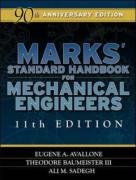
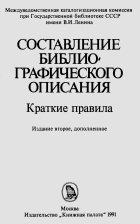
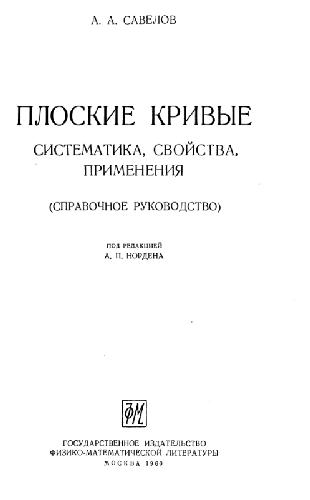
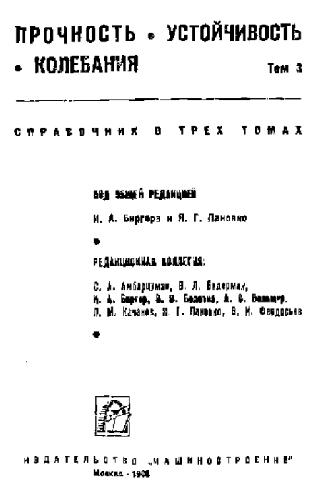
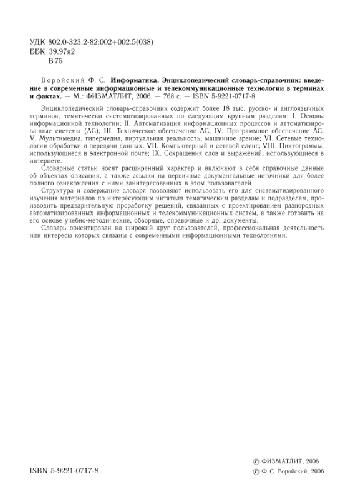

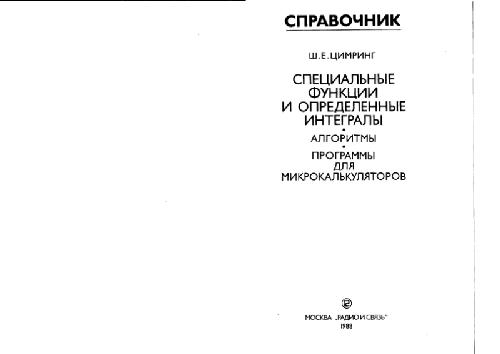
Reviews
There are no reviews yet.